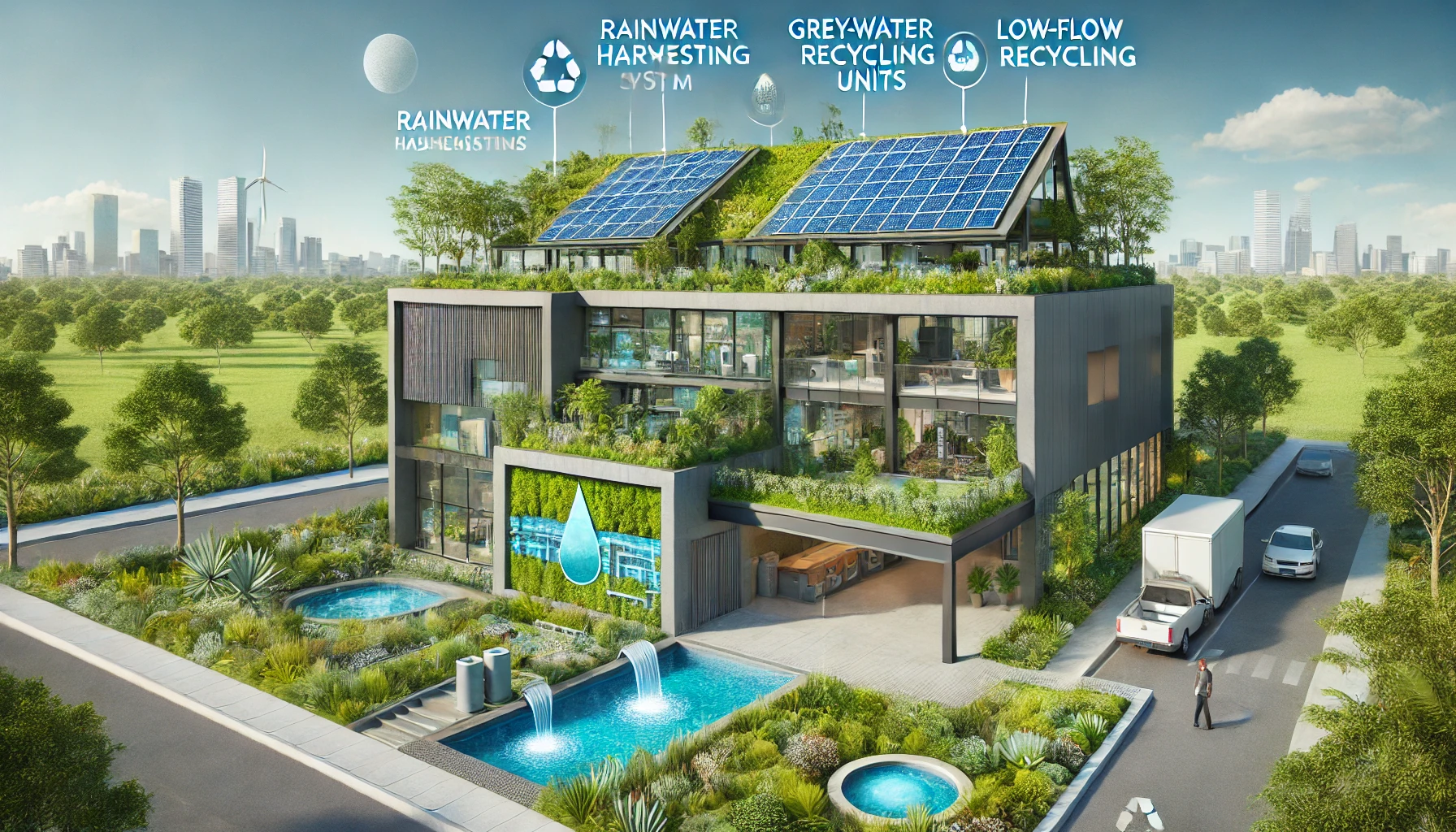Green buildings are designed to reduce the overall impact on the environment and human health by efficiently using energy, water, and other resources. In this article, we will explore water conservation in green buildings, focusing on the strategies and technologies that make it possible. By implementing these methods, we can create sustainable living spaces that contribute to the well-being of our planet.
Why Water Conservation Matters
Water is a finite resource, and its availability is increasingly threatened by climate change, population growth, and pollution. Conserving water is crucial for maintaining a sustainable environment. Green buildings, with their focus on efficiency and sustainability, play a vital role in reducing water consumption and preserving this precious resource.
Strategies for Water Conservation in Green Buildings
Efficient Plumbing Fixtures
One of the simplest and most effective ways to conserve water in green buildings is by installing efficient plumbing fixtures. These include low-flow faucets, showerheads, and toilets that use less water without sacrificing performance. For instance, a low-flow showerhead can reduce water usage by up to 50% compared to standard models.
Rainwater Harvesting
Rainwater harvesting is an innovative strategy that involves collecting and storing rainwater for various uses, such as irrigation and flushing toilets. This method not only conserves water but also reduces the demand on municipal water supplies. Installing a rainwater harvesting system can significantly lower a building’s water footprint.
Greywater Recycling
Greywater recycling systems collect and treat wastewater from sinks, showers, and laundry for reuse in non-potable applications, such as toilet flushing and landscape irrigation. By reusing greywater, green buildings can reduce the amount of freshwater needed, leading to substantial water savings.
Xeriscaping
Xeriscaping is a landscaping technique that uses drought-tolerant plants and efficient irrigation systems to minimize water use. This approach is particularly effective in arid regions where water is scarce. By incorporating xeriscaping, green buildings can create beautiful, low-maintenance landscapes that require minimal water.
Technologies for Water Conservation
Smart Irrigation Systems
Smart irrigation systems use weather data and soil moisture sensors to optimize watering schedules, ensuring that plants receive the right amount of water at the right time. These systems can reduce water use by up to 50% compared to traditional irrigation methods, making them an essential technology for water-efficient landscaping.
Water-Efficient Appliances
Incorporating water-efficient appliances, such as ENERGY STAR-certified dishwashers and washing machines, can significantly reduce water consumption in green buildings. These appliances are designed to use less water while maintaining high performance, contributing to overall water savings.
Leak Detection Systems
Water leaks can lead to significant water waste and damage to building structures. Leak detection systems use sensors and smart technology to identify and alert users to leaks promptly. By addressing leaks quickly, green buildings can prevent water waste and costly repairs.
Onsite Water Treatment Systems
Onsite water treatment systems purify water for reuse within the building. These systems can treat greywater and blackwater, making it safe for non-potable applications. By treating and reusing water onsite, green buildings can reduce their reliance on external water sources and promote water sustainability.
The Role of Building Design in Water Conservation
Integrating Water Conservation into Building Design
Effective water conservation starts with thoughtful building design. Architects and builders can incorporate water-saving features from the outset, ensuring that green buildings are equipped to minimize water use throughout their lifecycle. This includes designing plumbing systems that reduce water waste and incorporating natural features, such as green roofs, that help manage and conserve water.
Sustainable Building Materials
Using sustainable building materials can also contribute to water conservation. Materials that require less water during production and have a lower environmental impact help reduce the overall water footprint of a building. Additionally, materials that promote energy efficiency, such as insulation, can indirectly conserve water by reducing the energy needed for heating and cooling.
The Importance of Water Conservation Certification
LEED Certification
The Leadership in Energy and Environmental Design (LEED) certification is a globally recognized standard for green buildings. LEED certification considers water efficiency as a critical component, encouraging builders to implement water-saving strategies and technologies. Achieving LEED certification demonstrates a commitment to sustainability and can enhance the value and marketability of a building.
WaterSense Label
The WaterSense label, sponsored by the U.S. Environmental Protection Agency (EPA), identifies products and services that are water-efficient. By choosing WaterSense-labeled products, green buildings can ensure they are using the most efficient fixtures and appliances available, contributing to overall water conservation efforts.
Implementing Water Conservation in Green Buildings
To successfully implement water conservation in green buildings, it’s essential to integrate a variety of strategies and technologies. Efficient plumbing fixtures, rainwater harvesting, greywater recycling, and xeriscaping are all effective methods for reducing water use. Additionally, incorporating smart irrigation systems, water-efficient appliances, and leak detection systems can significantly enhance a building’s water efficiency. By prioritizing water conservation in building design and using sustainable materials, we can create structures that not only reduce water consumption but also promote a healthier environment. Achieving certifications like LEED and choosing WaterSense-labeled products further demonstrates a commitment to sustainability and can boost a building’s value.
Conclusion
Water conservation in green buildings is a critical aspect of sustainable living. By implementing the strategies and technologies discussed in this article, we can create buildings that are not only environmentally friendly but also efficient and cost-effective. Understanding and applying these methods can lead to significant water savings, contributing to the overall goal of preserving our planet’s precious resources.
Informative List: Key Strategies and Technologies for Water Conservation in Green Buildings
- Efficient Plumbing Fixtures: Install low-flow faucets, showerheads, and toilets.
- Rainwater Harvesting: Collect and store rainwater for non-potable uses.
- Greywater Recycling: Reuse treated greywater for irrigation and toilet flushing.
- Xeriscaping: Use drought-tolerant plants and efficient irrigation systems.
- Smart Irrigation Systems: Optimize watering schedules with weather data and soil moisture sensors.
- Water-Efficient Appliances: Choose ENERGY STAR-certified dishwashers and washing machines.
- Leak Detection Systems: Install sensors to identify and alert users to water leaks.
- Onsite Water Treatment Systems: Treat and reuse water within the building.
- Sustainable Building Materials: Use materials that require less water during production.
- Water Conservation Certification: Aim for LEED certification and use WaterSense-labeled products.
By incorporating these strategies and technologies, green buildings can play a pivotal role in conserving water and promoting sustainability. Let’s work together to build a future where water conservation is a standard practice, ensuring a healthy and sustainable environment for generations to come.

